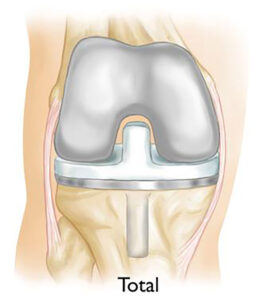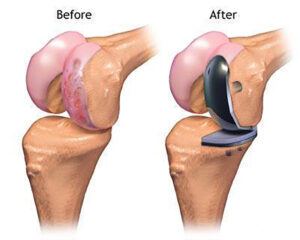What is a Partial Knee Replacement (PKR)?
A partial knee replacement is a less invasive or minimally invasive procedure that removes only the damaged area of the knee joint and replaces it with just those components required to restore normal knee function. Healthy tissue is left intact.
A partial knee replacement is a smaller version of a total knee replacement. It involves replacing only the arthritic/damaged portion of the knee joint.
“In partial knee replacement surgery, accurate
placement is the key to the implant working
well and lasting a long time,” –
Stephen Incavo, M.D.
For example, if the inner (medial) aspect of the knee is worn out, a medial unicompartmental arthroplasty (replacement) can be performed.
PKR surgeries have the advantage of maintaining the non-damaged, native part of the knee joint. Because of this, partial replacements may be preferable to traditional total knee replacement in the right candidate.
Limitations of Partial Knee Replacements
A disadvantage of PKR is, while the normal portions of the knee joint are maintained, these normal portions may wear out in time, requiring further surgery. Another important limitation of partial knee replacements is that there is statistical evidence that the components do not function as long as total knee replacements. For example, on average, the majority (over 95%) of total knee replacements last for 10-15 years without “wearing out” or loosening. While some available data demonstrates similar longevity for partial knee replacements, other data states that there is a higher wear and/ or loosening rate of these components, as well as a potential for complications rarely seen in knee replacement (e.g., fracture of the tibia). If you are interested in a partial knee replacement you should discuss these issues with your orthopedic surgeon.


